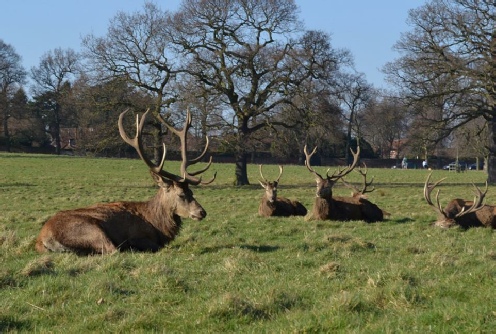Visitors since 7th November 2013
Mercian Archaeological Services CIC
Community Archaeology in the East Midlands,
Community Archaeology Nottinghamshire, Excavation, Research, Volunteering, Community
Archaeology Derbyshire, Training, Social, Learning, Community Archaeology Leicestershire,
Heritage, Involvement, Belonging, Knowledge sharing, Community Archaeology Lincolnshire,
Topographic Survey, Talks and Presentations, Outreach, Archaeology Projects , Open
Days, Schools, Finds Processing, Day Schools, Field Schools, Young People, Archaeology
and History of Sherwood Forest, Pottery Research, Medieval, Roman, Prehistoric, Community
Interest Company, Community Archaeology Nottinghamshire.
Community Archaeology in Nottinghamshire
Community Archaeology in Derbyshire
Community Archaeology in Leicestershire
Community Archaeology East Midlands
Community Archaeology in Lincolnshire
© Mercian Archaeological Services CIC 2013. Registered Business No. 08347842. All Rights Reserved.
A Forest in medieval times was an area of land subject to Forest Law.
The Forest Law protected Beasts of the chase (primarily Deer) from being hunted, by anyone except the king unless he gave them permission.
It also protected the Woodland and habitat in which they lived.
It was therefore illegal to hunt deer or to chop down trees and underwood within a Forest.
The Forest law was another layer of administration that people had to obey.
The first surviving legal texts relating to the forest laws come from 1100.This is at the very start of the reign of Henry I
Offences include:
- Clearing of land
- Cutting of wood
- Burning
- Hunting,
- Carrying of bows and spears in the forest
- Loosing of livestock
There were also rules regarding:
- The hambling of dogs
- Discovery of hide or flesh
(Hambling of dogs meant the removal of claws to prevent the dog from hunting).

Courts of the Forest:
There were a number of courts in the forest these included
Small fines court -
Major less frequent court – Forest Eyres for exacting justice on larger and more serious breaches.
Attachment court:
The attachment court was where judgment was passed on small cases of trespass on the vert and fines were issued.
In Sherwood Forest there were four such courts:
- Linby ,
- Calverton,
- Mansfield,
- and Edwinstowe
They met every 40 days at these locations, and were sometimes called the 40 day courts.
The Attachment court officials were known as Verderers.
This was a Privileged role-
Verderers had to be landowners within the forest to qualify for the position.
There were usually 4 per forest, but in Sherwood there were 6.
The roll of the 1292-
green oak was usually valued at 6d
a dry oak at 4d
a sapling from 1d to 3d
and stubb, or dry trunk of a pollard tree at 2d.
Forest Eyre:
The Forest Eyres were attended by itinerant justices, and were often named after the justices themselves,
eg. 1187 forest Eyre was known as the Eyre of Geoffrey Fitzpeter.
The Eyre dealt with extracting fines and levies from larger breaches of the forest law.
eg. In 1267 the Abbot of Rufford was charged with felling 483 oaks, for building purposes since the last Eyre.
Court of Special Inquisition:
Alongside the regular cycle of the court system was a more flexible court known as the court of Special Inquisition.
When hide of flesh was discovered there was an inquest in four neighbouring parishes to decide who was to blame.
This might lead to strangers getting the blame!
Punishments:
The forest Assizes of 1184 (Henry II) and 1198 (Richard I) prescribe:
Blinding and castration as a punishment for those who take deer or boar in the forest.
They also state that this was the practice in the time of Henry I (1100-
Fines:
Mutilation and hanging were banned in the forest clauses of Magna Carta in 1215.
After this the forest acted more as a source of income for the crown
Law Enforcement:
Every forest in England was overseen by a Keeper.
This person was appointed directly by the king.
In Sherwood Forest the Keepersip of the Forest was hereditary.
The De Caux and through marriage the D'Everingham families were hereditary keepers of the Forests of Nottinghamshire until 1286.
Following this the keepership was granted at the kings pleasure, and was usually given along with Stewardship of Nottingham Castle.
The keepers of the forest were responsible for policing the forest: they hired Foresters and agisters to act as a police force.
Foresters had the power to arrest people for infringments on the forest law. They patrolled the forest on horseback and on foot.
Agisters were tax collectors who adminstered rents and checked quotas relating to the grazing of animals (agistment) in the woods of the forest.
When someone had broken the law, a system of courts was required to punish the assailant.
The Future of Sherwood’s Past



Community Archaeology Nottinghamshire, Community Archaeology Derbyshire, Community Archaeology Leicestershire, Community Archaeology East Midlands, Mercian Archaeological Services Community Archaeology for Nottinghamshire, Derbyshire, Sherwood Forest, Leicestershire and the East Midlands. Community Archaeology Nottinghamshire, Community Archaeology East Midlands, Community Archaeology Leicestershire. Archaeological

The Sherwood Forest Archaeology Project
Project page links:
-
-
-
-
-
-
-
-
-
-
-
-
-
National Nature Reserve Archaeology Survey
-
-
-
-
-
-
-
-
-
About Sherwood Forest
-
-
-
-
-
-
-
-
-
-
-
-
Award Winners 2016
for "Engaging people in the heritage, history & archaeology of Sherwood Forest".





Some funders and partners:

World-










Sherwood Forest Historic Bus Tours: more details